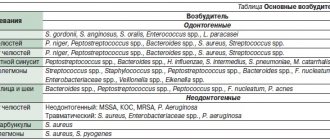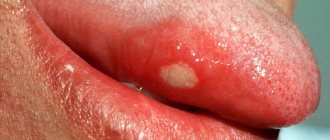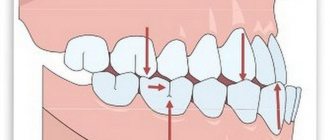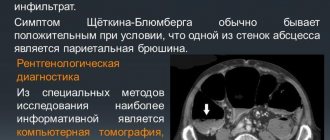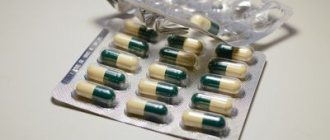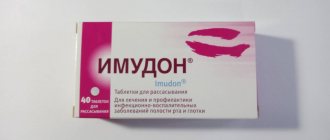Author of the article:
Soldatova Lyudmila Nikolaevna
Candidate of Medical Sciences, Professor of the Department of Clinical Dentistry of the St. Petersburg Medical and Social Institute, Chief Physician of the Alfa-Dent Dental Clinic, St. Petersburg
Inflammation of the periosteum (periostitis) is a disease that brings many painful symptoms. As a rule, acute pain and severe swelling immediately bring the patient to the dentist, and rightly so: not only the condition of the oral cavity, but also health in general depends on the timeliness of treatment.
Typical symptoms
Symptoms of inflammation of the periosteum of the tooth are quite pronounced:
- redness and swelling of the gums;
- increasing severe pain radiating to the ear, temple and other areas, depending on the location of the inflammation;
- swelling of the face on one side (cheeks, lips, cheekbones);
- high body temperature;
- symptoms of general intoxication (headache, dizziness, dry mouth, fatigue and weakness, general loss of strength);
- white or gray plaque on the gums;
- change in tooth position, tooth mobility;
- in some cases, the appearance of purulent discharge.
With a prolonged inflammatory process, a fistula can form: pus finds its way into the oral cavity, which is accompanied by the appearance of blood, but the pain and fever temporarily subside. This is due to the fact that the contents stop accumulating in the tissues and begin to flow out, but you should definitely consult a doctor.
What to do if a tooth becomes inflamed?
It is clear that it is better to consult a dentist. What if the doctor is far away, you are at the dacha, it’s night and there is no one to leave the children with? You can try to relieve the pain yourself, using what you have at hand. The World Wide Web is full of tips on how to relieve tooth inflammation at home.
Folk remedies recommend:
- Gargling with herbal decoctions. Sage, chamomile, calendula are suitable. It is important that the broth is not too hot or cold. The optimal temperature is 50-60 degrees.
- Applications from clove oil, eucalyptus, propolis tincture. Be careful with tinctures, alcohol can burn the mucous membranes.
- Solutions of salt and soda help wash away food debris and relieve irritation. A drop of iodine in the solution will perform a disinfecting function.
If there are no herbs and it is unclear what to rinse with, there is a modern life hack. Mouthwashes contain antimicrobial agents and herbal extracts. They will cope no worse than infusions and decoctions.
Important! A sick tooth should not be heated. Avoid heating pads, bags of hot sand, and salt.
But a cold compress can relieve swelling and reduce discomfort.
If you have painkillers in your medicine cabinet, don’t delay taking them. The pain is exhausting and makes it difficult to concentrate. It’s better to relieve the pain and think about the next steps.
Remember, taking a pill does not fix the problem. Knowing how to relieve pain is useful, but only a qualified dentist can find the cause and eliminate it.
Why does inflammation of the periosteum occur?
There are three ways that pathogenic bacteria enter the periosteum:
- odontogenic factor - dental diseases become the source of inflammation: caries, cysts and granulomas of the tooth root, pulpitis. Bacteria penetrate deep into soft tissues. Quite often, periostitis is observed as a result of a long and complicated process of eruption of “eights”;
- hematogenous factor - infection occurs as a result of bacteria entering the tissues from the bloodstream or lymph flow. As a rule, this happens in connection with ENT diseases, furunculosis of the face, neck, abscesses, etc.;
- traumatic factor - mechanical damage to the periosteum during fractures, impacts, complex tooth extractions leads to inflammation.
Causes
Without provoking factors, periostitis does not develop in children. The main cause of pathology is the lack of timely treatment of dental diseases. According to statistics, periostitis in children with baby teeth occurs in 30% of cases of dental disease. This is explained by the fact that parents are of the opinion that there is no need to treat temporary teeth, since they will change anyway.
The main causes of periostitis:
- deep caries;
- chronic or acute periodontitis;
- periodontal damage;
- gingivitis;
- improper oral hygiene;
- teething disorders;
- injury to the jaw, tooth or gum;
- perforation of dental tissue during treatment.
Periostitis can also develop if an infection penetrates, if there is a mechanical injury to the gums, tooth or jaw. In rare cases, pathology occurs due to the fault of the dentist during perforation as a result of treatment.
Types of inflammation
Symptoms of inflammation of the periosteum of the tooth depend on the form of the process. In the acute form, pain and swelling are severe, difficulty swallowing, spreading of swelling to the face and neck, and enlarged lymph nodes may be observed. Acute inflammation occurs over several days.
The chronic form may bother the patient for several months. Symptoms are more moderate; a fistula may appear - an opening through which inflamed tissues get rid of purulent contents.
There are also two types of both acute and chronic inflammation:
- serous - more often provoked by traumatic injury, swelling forms quickly, but the pain is more moderate and tolerable, relief occurs, on average, after 5 days;
- purulent - more dangerous, characterized by severe throbbing pain, severe swelling and redness of soft tissues, and higher body temperature.
In both cases, you should definitely consult a doctor, since the risk of complications is very high.
Chronic periostitis
This form of periostitis is less common than others. Chronic periostitis most often develops in the periosteum of the lower jaw and is characterized by a local inflammatory reaction in the form of dense edema, which does not significantly change facial features. At the site of inflammation, the bone thickens and the lymph nodes enlarge. At the same time, the oral mucosa may become swollen and red. Chronic periostitis does not go away for a long time and can develop over 4–8 months, and sometimes several years, making itself felt with periodic exacerbations.
Features of treatment
Treatment of inflammation of the periosteum of the tooth should only be carried out by a doctor. The specialist chooses tactics depending on the type and form of the disease.
Drug treatment is only advisable if you consult a doctor immediately at the first symptoms of the disease. Therapy includes:
- taking antibiotics prescribed by a specialist: this will stop inflammation and prevent the spread of infection;
- taking anti-inflammatory drugs, painkillers;
- local effect: use of antiseptic rinses, chlorhexidine baths, ointments and gels with an anti-inflammatory effect.
The course of treatment is at least 5-7 days. If relief does not occur, surgical methods are used.
Symptoms and treatment of inflammation of the periosteum of the tooth are individual. In case of advanced inflammation, ineffectiveness of conservative methods and other indications, the doctor performs a tissue opening - periostotomy. It is carried out in several stages:
- anesthesia: local infiltration or conduction anesthesia is sufficient.
- Making an incision in the gum in the projection of the source of inflammation.
- Washing and cleaning tissues.
- Treatment of the wound with antiseptic agents.
- Installation of drainage - a small rubber band in order to prevent premature fusion of the mucous membrane and the re-formation of pus inside.
The drainage is removed by a doctor after a few days; you should not do this yourself. The specialist must make sure that the contents of the inflamed tissue are released and the wound can be allowed to heal. If the incision is small, no stitches will be required.
If the cause of the disease was a damaged tooth, it is treated: restoring its shape using filling materials, filling root canals. Sometimes removal is required; it is performed simultaneously with surgical treatment of periostitis.
Additionally, physiotherapeutic procedures may be recommended. They will speed up inflammation relief and healing. These include UHF, darsonval therapy, infrared radiation, and magnetic therapy. During the healing period, it is advisable to use vitamins and restorative medications.
Prevention
Periostitis in children is a dangerous pathology that can lead to the most severe consequences. It is not difficult to prevent the disease even in its chronic form.
Parents should take a responsible approach to dental health by regularly visiting the dentist’s office with their child for preventive purposes and seeking help at the first pathological signs.
Periostitis does not go away on its own. Self-medication is also not effective, since it is impossible to cope with the purulent process occurring inside the tissues without removing the pus. Periostitis in children at any age requires urgent professional dental care. Timely consultation with a doctor will avoid long and complex treatment, as well as life-threatening complications.
How to help yourself before visiting a doctor
If the periosteum of the jaw is inflamed, you should forget about such traditional methods as heating: any hot compresses will aggravate the situation. If you open the formation, take antibiotics without a doctor’s prescription, or remove the pus yourself, this can lead to dire consequences.
You can alleviate your condition by doing the following:
- rinse your mouth with a weak saline solution at room temperature or an antiseptic with an analgesic effect;
- apply a cool compress to the cheek on the side of the inflammation;
- Take an over-the-counter pain reliever.
These measures will help relieve pain and slightly reduce swelling, but you should contact a specialist as soon as possible. As an antiseptic rinse, you can use ACTIVE mouthwash. It does not contain alcohol, so there is no risk of burning inflamed tissues, and the chlorhexidine and benzydamine in the composition will help relieve the condition before you see a doctor.
Methods of pain relief
The surgical procedure is performed under local anesthesia. Before performing the manipulation on the upper jaw, bilateral anesthesia is administered by infiltration. This anesthesia involves administering the drug to both sides of the jaw.
To perform intervention on the mobile jaw, torus or mandibular anesthesia is used. The anesthetic is injected into the area of the mandibular ridge.
Reference! With extensive foci of inflammation, the effectiveness of pain relief decreases. In this regard, it is recommended to administer potent anesthetics.
Clinical researches
Repeated clinical studies have proven that the two-component mouth rinse ASEPTA ACTIVE more effectively combats the causes of inflammation and bleeding compared to single-component rinses - it reduces inflammation by 41% and reduces bleeding gums by 43%.
Sources:
- The role of anti-inflammatory rinse in the treatment of periodontal diseases (L.Yu. Orekhova, A.A. Leontyev, S.B. Ulitovsky) L.Yu. OREKHOVA, Doctor of Medical Sciences, Prof., Head of Department; A.A. LEONTIEV, dentist; S.B. ULITOVSKY, Doctor of Medical Sciences, Prof. Department of Therapeutic Dentistry of St. Petersburg State Medical University named after. acad. I. P. Pavlova
- The use of drugs from the Asepta line in the complex treatment of inflammatory periodontal diseases (N.V. Berezina E.N. Silantyeva S.M. Krivonos, Kazan State Medical Academy. Kazan.) N.V. BEREZINA, E.N. SILANTIEVA, S.M. KRIVONOS Kazan State Medical Academy
- Report on determining/confirming the preventive properties of commercially produced personal oral hygiene products: Asepta toothpaste used in combination with Asepta mouthwash and Asepta gum balm Head. Department of PFS Doctor of Medical Sciences Professor S.B. Ulitovsky St. Petersburg State Medical University named after Academician I.P. Pavlova. Faculty of Dentistry. Department of Preventive Dentistry.
